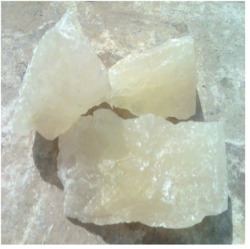Formula (NH4)Al(SO4)2 Melting point 93.5 °C Boiling point 120 °C | Molar mass 237.15 g/mol Density 2.45 g/cm³ Appearance white crystals | |
 | ||
Make ammonium alum or ammonium aluminium sulfate
Ammonium aluminium sulfate, also known as ammonium alum or just alum, is a white crystalline double sulfate usually encountered as the dodecahydrate, formula (NH4)Al(SO4)2·12H2O. It is used in small amounts in a variety of niche applications. The dodecahydrate occurs naturally as the rare mineral tschermigite.
Contents
- Make ammonium alum or ammonium aluminium sulfate
- Production and basic properties
- Uses
- Toxicology
- References
Production and basic properties
Ammonium alum is made from aluminium hydroxide, sulfuric acid and ammonium sulfate. It forms a solid solution with potassium alum. Pyrolysis leaves alumina. Such alumina is used in the production of grinding powders and as precursors to synthetic gems.
Uses
Ammonium alum is not a major industrial chemical or a particularly useful laboratory reagent, but it is inexpensive and nontoxic, which invites many niche applications. It is used in water purification, in vegetable glues, in porcelain cements, in deodorants and in tanning, dyeing and in fireproofing textiles. The pH of the solution resulting from the topical application of ammonium alum with perspiration is typically in the slightly acid range, from 3 to 5.
Ammonium alum is a common ingredient in animal repellant sprays.
Toxicology
Aluminium sulfate, closely related to ammonium alum, is nontoxic with an LD50 of 6207 mg/kg. No human or ecological (for reduced concentrations) toxicity registered.
